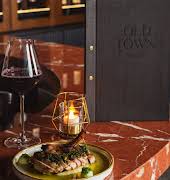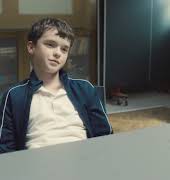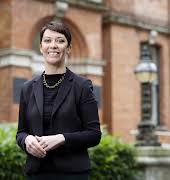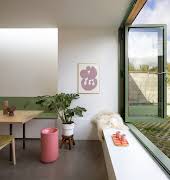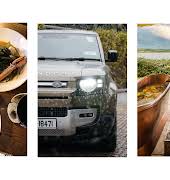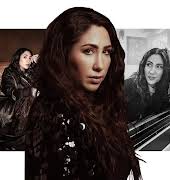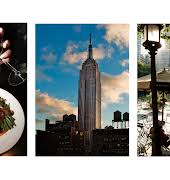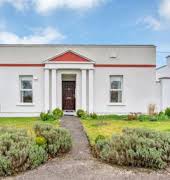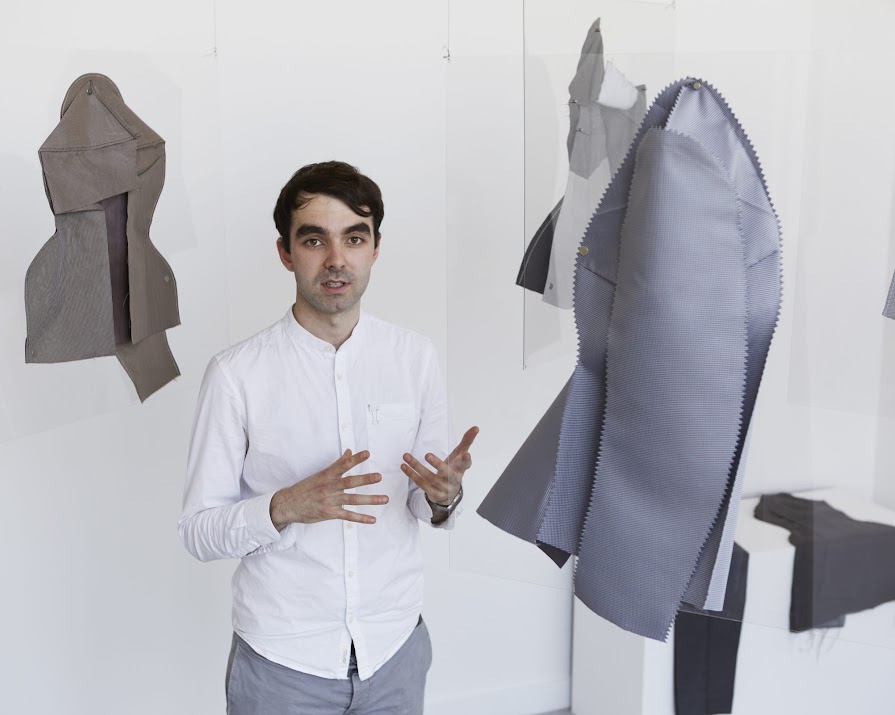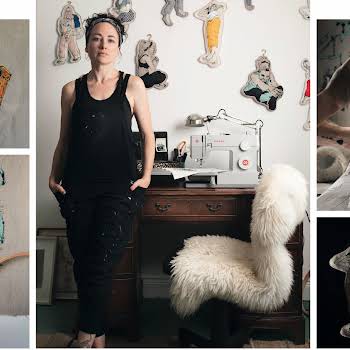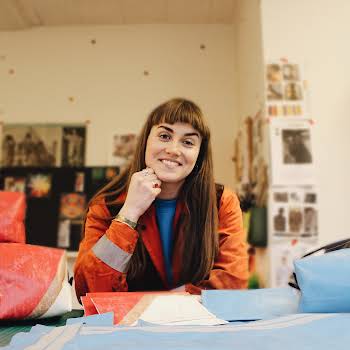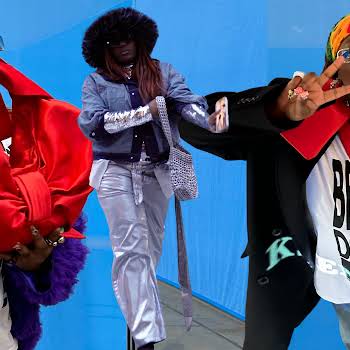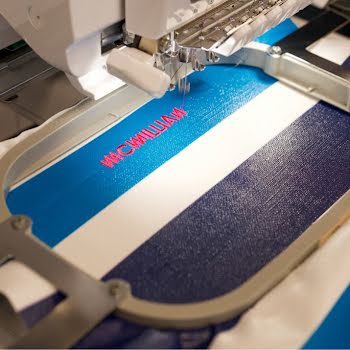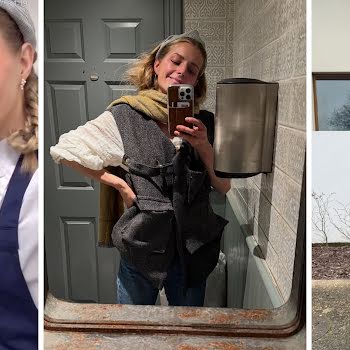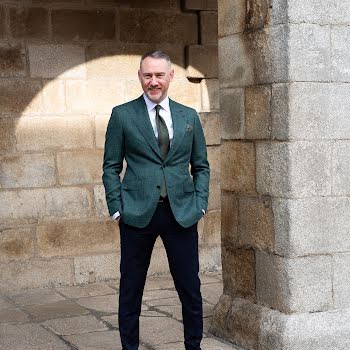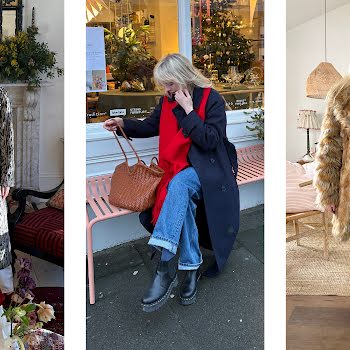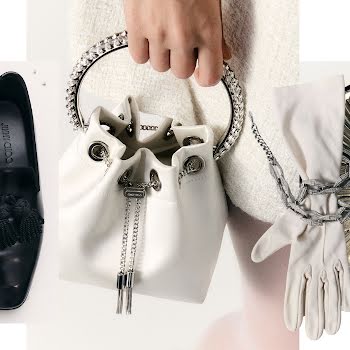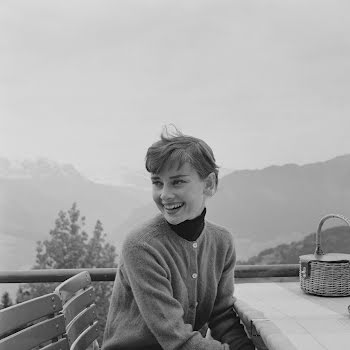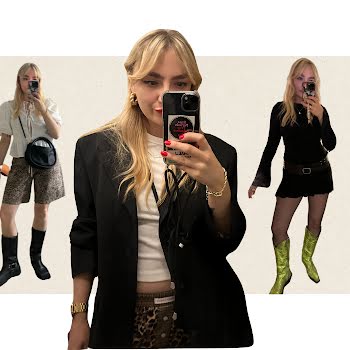
Irish fashion design student Andrew Bell describes a day in the life of a Royal College of Art student
By Marie Kelly
11th Dec 2018
11th Dec 2018
Andrew Bell is in the final year of his MA in fashion design at the Royal College of Art in London, supported by the Kildare Village Fashion Scholarship. Here he describes what a typical day is like at one of the world’s most prestigious design colleges.
What does a typical day look like at the RCA?
The idea of a ‘typical day’ at the RCA is somewhat of a paradox, because everything about the RCA is constantly changing, evolving and moving forward. It really is a roller-coaster of an experience. No two days are the same.
I usually reach the studio between 9am and 10am or earlier if I have a presentation or an important tutorial to prepare for. The studio is a bright, airy and open space, shared between first and second year MA students. With over 80 students sharing the space its usually buzzing my 11am.
Alongside our main collection, we’re also working on a super conceptual fragrance project. This is in collaboration with the French fragrance conglomerate IFF (International Flavour and Fragrances). We have lots of unusual workshops and lectures as part of this project and earlier in the month the CEO flew over from Paris to introduce the brief in person.
The days really evaporate here and next thing you know security are locking up and you’re on the last tube him at 12.30am, finally hitting the hay around 1.30am, before getting up to do it all over again in a matter of hours.
The talks and workshops for this project alone mean that a typical morning could include a perfume workshop with a perfumer from California, a scent-led lecture in the dark or a talk on the relationship between scent and psychology with a Cambridge University professor specialising in trans-modal psychology. This is really just the tip of the iceberg in terms of what a regular morning can look like in the studio.
In the afternoon I might have an aesthetics workshop where we present our latest work in groups, sharing constructive criticism collectively. Alternatively, there might be a guest lecturer doing one-to-one tutorials. Last week we had Giles Deacon in the studio; it was great to get his perspective on my work.
For lunch I usually call up to the student union cafe. Its great to chat with friends from other courses and to catch up on what everyone is up too. After lunch I might meet with a technician in one of the workshops to discuss or develop a sample; whether its laser cutting an idea for a button or a clasp, or talking to a mixed-media technician about using the inflatable machine towards a perfume capsule idea. Then there’s post-lunch fabric shopping on Goldhawk road, and if you have time, talking through the potential to dye or print fabrics with the technicians on the textiles floor.
The days really evaporate here and next thing you know security are locking up and you’re on the last tube him at 12.30am, finally hitting the hay around 1.30am, before getting up to do it all over again in a matter of hours.
What is the atmosphere like in such a competitive university?
The atmosphere at the RCA can be intense, but never in a negative way. It is a serious commitment to study here and most people push themselves to the very limit of what they can achieve in these two precious years. That said, I never feel that I am in competition with anyone else on my course; at MA level you realise that everyone’s journey, aesthetic and motivations are unique to them and their output. The open studios, shared workspaces and group projects create an atmosphere that is very much about discovering yourself and the work of others in a positive way.
Artists and designers can sometimes be portrayed as the people that put the ‘fluff’ and ‘icing’ on things, especially fashion designers. I would remind myself that fashion affects everybody on the planet and every industry
It must be a stressful environment. How do you handle stress?
Like most fashion studios, things can get a bit tense in the studio when we’re nearing a deadline. Hyde Park is on our doorstep, so it is really easy to clear your mind at lunchtime. The Serpentine Gallery is in the heart of the park and it’s one of those small galleries that you can drop in and out of without loosing half a day. They also have a small bookshop with artists books, which can be nice to browse.
If I’m having a particularly stressful day I usually wind up in the student union cafe for some coffee and cake and a chat with friends. I work part-time in the cafe during the week, and have forged some really great friendships with other students that work there. Its entirely run by students and the vibe is very relaxed and sociable. The free tea and coffee also works out well!

If you could go back and tell yourself one things before studying design what would it be?
If I could go back in time I would tell myself that taking work home late at night is a total waste of time. Catching up on sleep and getting up early in the morning is a better way to get things done in the long run. I would also tell myself that studying at an art and design college does not make you any less academic than studying law, medicine or another academic degree. Artists and designers can sometimes be portrayed as the people that put the ‘fluff’ and ‘icing’ on things, especially fashion designers. I would remind myself that fashion affects everybody on the planet and every industry; aesthetics are a visual language that are complex and vital to the ways in which we communicate as individuals and societies.
What was your biggest fear starting out?
Like most designers I sometimes freak out that I’ll wake up one day and be out of ideas or inspiration. But this feeling never lasts long. There’s always something to twig my interest. There is also that perpetual fear of making the wrong choice; the wrong fabric, the wrong colour, the wrong texture. It’s all about testing and making tough decisions that would usually involve a lot of financial consideration and planning.
We are a small industry of people and it’s really important to be able to communicate well and to work well and respectfully with others.
What advice would you give to a young hopeful designer starting out in the industry?
Fashion is a language and a tool for communication; it’s really important to understand your own voice in an industry that’s full of noise. Have an opinion on everything and express that opinion through your work. Make clothing for yourself and your friends, try things on the human body. Fashion is not about sketching drawings in a trendy studio, nor is it about ‘dress- making’ alone. You don’t have to be good to start, but you have to start to get good.
What skill set is most important for a career in fashion?
Fashion encompasses so many skill sets; it really demands a lot. From drawing and draping to pattern cutting, sewing and garment construction, to graphic design, photography and CAD (computer-aided design). With this in mind I think that the most important skill set is the ability to learn fast and to learn to multi-task fast too. It also demands excellent communication skills, both visually and interpersonally. We are a small industry of people and it’s really important to be able to communicate well and to work well and respectfully with others.

What is your favourite part of this course?
It’s having the absolute luxury and freedom to create whatever I want, with access to the most incredible equipment, the most knowledgeable technicians and dedicated tutors. Having the ability to sit at my desk in the studio and to know that I can make almost anything I can conceive of is an incredible feeling. As a young designer it can be really hard to access technology and resources, but as a student on the MA, there are so many opportunities that you don’t get when you are working on your own.
As a womenswear design student, how do you want women to feel when wearing your clothes?
There is nothing more exciting to me than working on a jacket for weeks on end, and watching a model or friend pull it on at the final fitting, giving it shape and bringing it to life. In my cutting I strive to capture the feeling that you get when you pull on your favourite jacket or coat; where the shoulders, bicep and upper back fit just right. There is confidence, security and comfort in that and you can see it in the body language of the women who wear my pieces. It’s one of the most rewarding aspects of my work.

How do you feel about sustainable fashion? Is it important to you?
I often think that the only thing that gets recycled in fashion are ideas, and this can be a really overwhelming prospect; especially when you consider the volume of textile waste we generate annually. In the first year of my MA I worked on a brief about the development of future systems for the fashion industry, specialising in future manufacturing ideas. From this project I realised that the role of the fashion designers is not just to design ‘new clothing’, but to develop and push new systems for the industry as a whole, systems that reframe the way we produce, consume, manufacture and distribute clothing.
Two years ago I was working in a cafe in East London and now I’m studying an MA in the number one Art College in the world.
At first I really resisted these problem spaces, but now they have become a central aspect of my work and what makes it innovative and new. I began using ultrasonic welding and taping technology to develop new methods of manufacture that reduce the number of steps and processes used in traditional tailoring methods. By thinking about sustainability and challenging the status quo I am now working towards a ‘future tailoring’ aesthetic. Many designers are realising the importance of developing new and sustainable ways of working, and I was lucky to feature alongside other future thinking designers at the Burberry Future Materials Exhibition at London Design Festival in September.
What’s the dream after you graduate?
It’s hard to know where and what will unfold after my MA finishes in June. Two years ago I was working in a cafe in East London and now I’m studying an MA in the number one Art College in the world. You never know what’s around the corner, especially living in London. That said I would love to get some industry experience at luxury level. I really like the idea of moving to Milan for a while and living the Dolce Vita. I have a few friends in the industry who are based there, and I would love to work for Jil Sander; the SS19 show was so sharp and chic.
Like most designers I’m torn between wanting to work for companies, and wanting to work for myself. Creative consultancy would be really great as it allows you flexibility to work on multiple projects at once, while also juggling some of my own design work. That would be really fulfilling for me – I like to keep busy.

